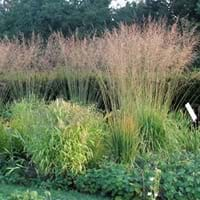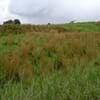Life Span
Perennial
Perennial
Origin
United States, Northeastern United States, Mid-Atlantic United States, Southeastern United States, North-Central United States, Central United States, South-Central United States, Texas
Europe, Eastern Europe, Southern Europe, Russia/Siberia, Asia, Central Asia, Southern Asia
Types
Virginia water horehound
Not Available
Habitat
Along Railroads, Barren waste areas, Hill prairies, Mined land, Pastures, Roadsides, Rocky glades, Sandy areas, Upland, Upland clay prairies, Upland sand prairies, Upland sandy savannas, Upland savannas, Upland soils
Boggy areas, Dry and Young forest Heaths, Lowland
USDA Hardiness Zone
5-8
5-8
AHS Heat Zone
9 - 1
9 - 1
Sunset Zone
Not Available
1a, 1b, 2a, 2b, 3a, 3b, 4, 5, 6, 7, 8, 9, 14, 15, 16, 17
Habit
Clump-Forming
Arching/Fountain-shaped
Flower Color
Not Available
Dark Purple
Flower Color Modifier
Bicolor
Bicolor
Fruit Color
Not Available
Non Fruiting Plant
Leaf Color in Spring
Green
Green
Leaf Color in Summer
Light Green
Light Green
Leaf Color in Fall
Orange, Tan, Brown
Green, Gold
Leaf Color in Winter
Tan, Sandy Brown
Tan
Leaf Shape
Grass like
Needle like
Plant Season
Summer, Fall, Winter
Spring, Summer, Fall, Winter
Sunlight
Full Sun, Partial Sun, Partial shade
Partial Sun, Partial shade
Type of Soil
Loam, Sand
Clay, Loam, Sand
The pH of Soil
Acidic, Neutral, Alkaline
Acidic, Neutral
Soil Drainage
Well drained
Average
Bloom Time
Early Fall, Fall
Early Summer, Summer, Late Summer, Early Fall
Tolerances
Pollution, Drought
Not Available
Where to Plant?
Ground
Ground, Pot
How to Plant?
Divison, Root Division, Seedlings
Divison, Transplanting, Vegetative Reproduction
Plant Maintenance
Medium
Low
Watering Requirements
Average Water Needs, Medium
Requires regular watering, Water more frequently during periods of extreme drought
In Summer
Lots of watering
Lots of watering
In Spring
Moderate
Moderate
In Winter
Average Water
Average Water
Soil pH
Acidic, Neutral, Alkaline
Acidic, Neutral
Soil Type
Loam, Sand
Clay, Loam, Sand
Soil Drainage Capacity
Well drained
Average
Sun Exposure
Full Sun, Partial Sun, Partial shade
Partial Sun, Partial shade
Pruning
Remove damaged leaves, Remove dead branches, Remove dead leaves
Prune in winter, Remove damaged leaves, Remove dead branches, Remove dead leaves
Fertilizers
All-Purpose Liquid Fertilizer
No need to fertilize every year
Pests and Diseases
Red blotch
Pests and diseases free
Plant Tolerance
Drought
Not Available
Flowers
Insignificant
Showy
Flower Petal Number
Single
Single
Foliage Texture
Fine
Medium
Foliage Sheen
Matte
Matte
Attracts
Birds, Butterflies
Not Available
Allergy
Pollen
Not Available
Aesthetic Uses
Not Used For Aesthetic Purpose
Showy Purposes, Water gardening
Beauty Benefits
Not Available
Not Available
Edible Uses
Insignificant
No
Environmental Uses
Air purification, Food for birds, Wildlife
No fertilizer, pesticides, or herbicides needed
Medicinal Uses
Back pain, Diarrhea, Frostbite, Itching, Piles, Sore Eyes, Sore throat
No Medicinal Use
Part of Plant Used
Root, Seeds, Stem
Whole plant
Other Uses
Cattle Fodder, Used As Food, Used as Ornamental plant
Used as Ornamental plant
Used As Indoor Plant
No
No
Used As Outdoor Plant
Yes
Yes
Garden Design
Dried Flower/Everlasting, Wildflower
Bedding Plant, Container, Cutflower, Dried Flower/Everlasting, Mixed Border
Botanical Name
ANDROPOGON virginicus
Molinia arundinacea
Common Name
Broomsedge, Broomsedge Bluestem
Moor Grass
In Hindi
Broomsedge grass
Tall Moor Grass
In German
broomsedge Gras
Hoch Pfeifengras
In French
broomsedge herbe
Herbe Moor hauteur
In Spanish
hierba Broomsedge
Tall Grass Moor
In Greek
Broomsedge γρασίδι
Ψηλός Moor Grass
In Portuguese
Broomsedge grama
Alto Moor Relva
In Polish
Broomsedge trawy
Wysoki Moor Trawa
In Latin
Broomsedge herba
Alta Maurus Grass
Phylum
Magnoliophyta
Magnoliophyta
Class
Liliopsida
Liliopsida
Order
Cyperales
Cyperales
Clade
Angiosperms, Commelinids, Monocots
Angiosperms, Commelinids, Monocots
Tribe
Andropogoneae
Not Available
Subfamily
Panicoideae
Not Available
Number of Species
Not Available
Not Available
Season and Care of Broomsedge and Molinia Arundinacea
Season and care of Broomsedge and Molinia Arundinacea is important to know. While considering everything about Broomsedge and Molinia Arundinacea Care, growing season is an essential factor. Broomsedge season is Summer, Fall and Winter and Molinia Arundinacea season is Summer, Fall and Winter. The type of soil for Broomsedge is Loam, Sand and for Molinia Arundinacea is Clay, Loam, Sand while the PH of soil for Broomsedge is Acidic, Neutral, Alkaline and for Molinia Arundinacea is Acidic, Neutral.
Broomsedge and Molinia Arundinacea Physical Information
Broomsedge and Molinia Arundinacea physical information is very important for comparison. Broomsedge height is 60.96 cm and width 30.48 cm whereas Molinia Arundinacea height is 90.00 cm and width 15.20 cm. The color specification of Broomsedge and Molinia Arundinacea are as follows:
Broomsedge flower color: Not Available
Broomsedge leaf color: Green
Molinia Arundinacea flower color: Dark Purple
- Molinia Arundinacea leaf color: Green
Care of Broomsedge and Molinia Arundinacea
Care of Broomsedge and Molinia Arundinacea include pruning, fertilizers, watering etc. Broomsedge pruning is done Remove damaged leaves, Remove dead branches and Remove dead leaves and Molinia Arundinacea pruning is done Prune in winter, Remove damaged leaves, Remove dead branches and Remove dead leaves. In summer Broomsedge needs Lots of watering and in winter, it needs Average Water. Whereas, in summer Molinia Arundinacea needs Lots of watering and in winter, it needs Average Water.





